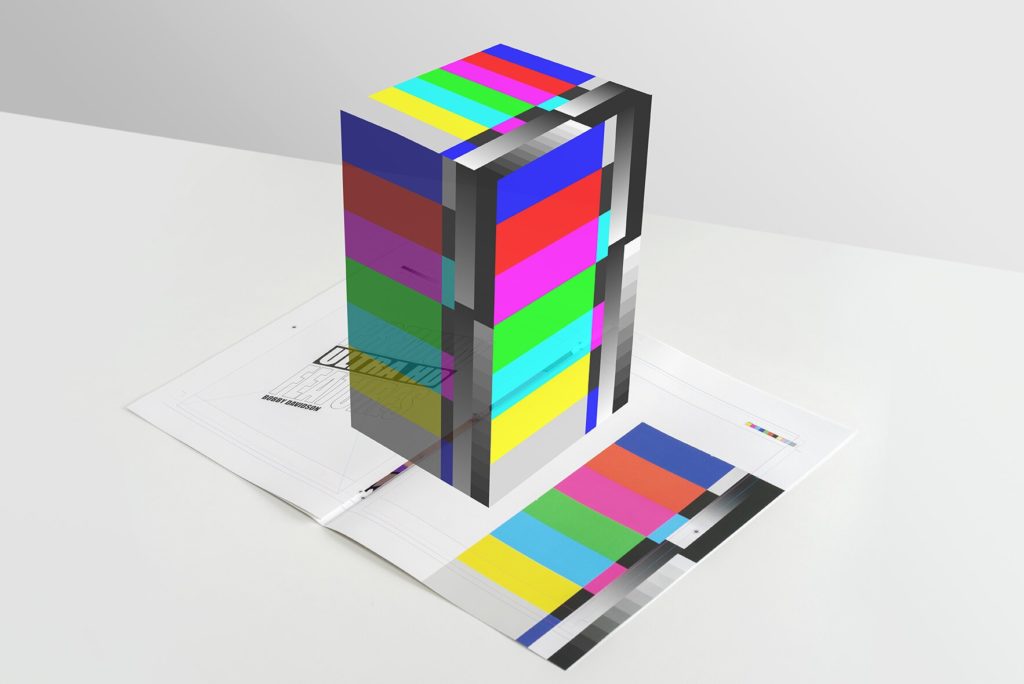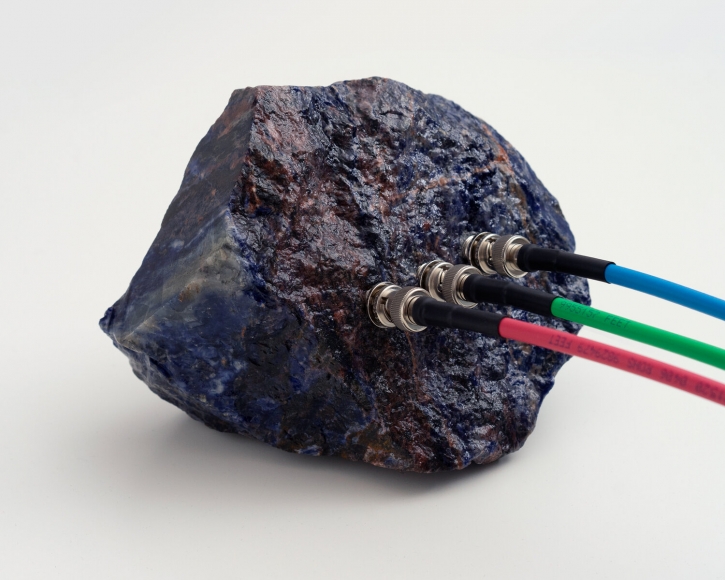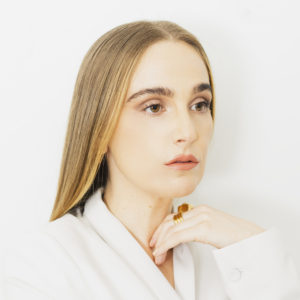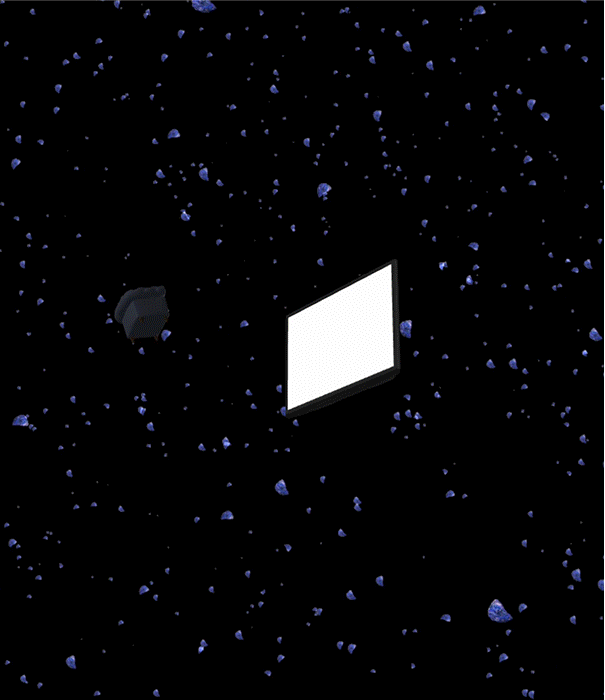Bobby Davidson is a Brooklyn-based artist and cinematographer. Bobby has established himself as an interdisciplinary artist using painting, sculpture, video, and virtual reality. Assembling works from both the physical and digital world, he has sequentially created a lineage of works that navigate beyond a singular dimension, capturing an extension of both the physical and nonphysical world we live in today. Bobby’s series Parasitic Capacitance is currently on view with Launch F18 Gallery in New York City, and he is the first artist to debut his NFT as part of their virtual “Viewing Room” series.

Much of your recent work comments on technology, old and new, and employs digital manipulation to bend reality with references to art history. Do you feel a viewer must be aware of these processes and concepts to appreciate your work?
My relationship with art and art history really grew out of a passion for learning about the masters, which lead me to examine my own personal motivations to become an artist, specifically beginning with photography. My interest in technology and the mechanics of how things are created allowed me to experiment and expand in my artistic practice arriving at a place where I feel most comfortable not being defined as an artist only working in any one given medium.
I try to be as enigmatic as possible but for a purpose. My goal is to give a subtle wink to the audience but at the same time have the viewer think beyond their own conventions and sensibilities so they might find greater meaning in their own everyday lives.

Who are your biggest influences?
The Pictures Generation had a huge influence on me. This was the first time I thought outside traditional means of producing. I think this movement really challenges traditional art forms. Ideas like authorship and appropriation really resonated with me, challenging me to start thinking about what can and can’t be art. When image culture and media are your subject matter, all of a sudden, there are limitless possibilities. This was a huge growth period for me as an artist.
Both your digital and physical works push boundaries relating to the limitations of traditional film and photography. What have you discovered about these mediums that you hadn’t considered and/or wish to explore further?
Using a doorknob as an example…From a utilitarian standpoint, a doorknob serves a purpose; to be used to open and close a door. But the practicality of that doorknob can represent so many other purposes. The ability to recontextualize any object in order to have a dialogue is why I think art is so special. The doorknob can be many different things in this case.
My practice is slowly moving towards simplicity and I’m finding a synthesis in the process of making work, especially with NFTs. I feel like I can explore augmented and virtual reality and find conversation with a community already engaged in these discussions and new ways of creating.
Do you feel more creative freedom as a multidisciplinary artist? How do you define your style as an artist who explores a variety of mediums?
In a strange way I’ve always wanted my work to come across as author-less, but at the same time still, maintain certain characteristics. I think that’s why my work often takes on a variety of forms. It’s my way of not taking the work so seriously and allows for a bit of mystery and humor. There is always a through-line with my work but with the purpose of not being so rigid or self-conscious.
I recently published an interactive augmented reality zine called Ultra HD Premium Features. The zine invigorates the viewing experience through the playful use of augmented reality. Much like photography, cinematography is constantly innovating and evolving and as a result, it’s become a highly scrutinized medium. From dynamic range of an image, resolution size, full-frame versus Super 35mm, anamorphic versus spherical, and signal to noise ratio – the tools are seemingly endless…We have lost sight of what these tools were actually designed to do which is to help us tell a story. These are the methods I used in the zine, teasing out different materials to create a dialogue about a time-based medium that’s also a physical object that you can interact with virtually using a smartphone.
Your current series Parasitic Capacitance is a body of work that explores several mediums including a variety of digital pieces. Can you speak about the genesis of this series and the ideas behind these works?
This work really grew out of my unending reliance on screens, whether that be on my smartphone or studio workstation. It would be easy for me to say that this daily consumption has had a negative impact on my everyday life. But instead, I feel these tools, which by using on a regular basis, become a performative experience of our everyday screen-based lives where we can begin to consider technology as not in conflict with nature but possibly an extension of the human realm and how we define the authentic connection in these times. I wanted to play with this duality of worlds by creating the architecture of connecting the physical with the non-physical or technological. It was also a way for me to recontextualize some of my older work but also challenge myself to explore new realms such as virtual and augmented realities.

What was the inspiration and story behind your current NFT titled New American Landscape?
New American Landscape is actually based on a Frederic Edwin Church painting titled Twilight. I was drawn to his highly romanticized and oftentimes photorealistic depictions of nature. I found myself seeing deeply into these paintings, falling through the canvas, much like we fall through our screens and devices. I’m interested in how we can communicate, explore, and play with modern-day escapism.
The New American Landscape NFT is a vignette that examines the aberrations of screens and dissection of what is real. It’s the ‘what are we looking at?’ at any given moment that I find to be both uncanny and exciting. Reshaping the conversation around humanity, media consumption, climate change, natural disasters, and how our views can be skewed by experiencing different forms of reality; the limitlessness of digital manipulation coupled with elements of the real world is what I find to be intriguing.
To learn more about Bobby check out his website and follow him online:
Bobby Davidson
Website: untitledproof.com
Instagram: @davidson_bobby
Twitter: @BobbyDa71616116



